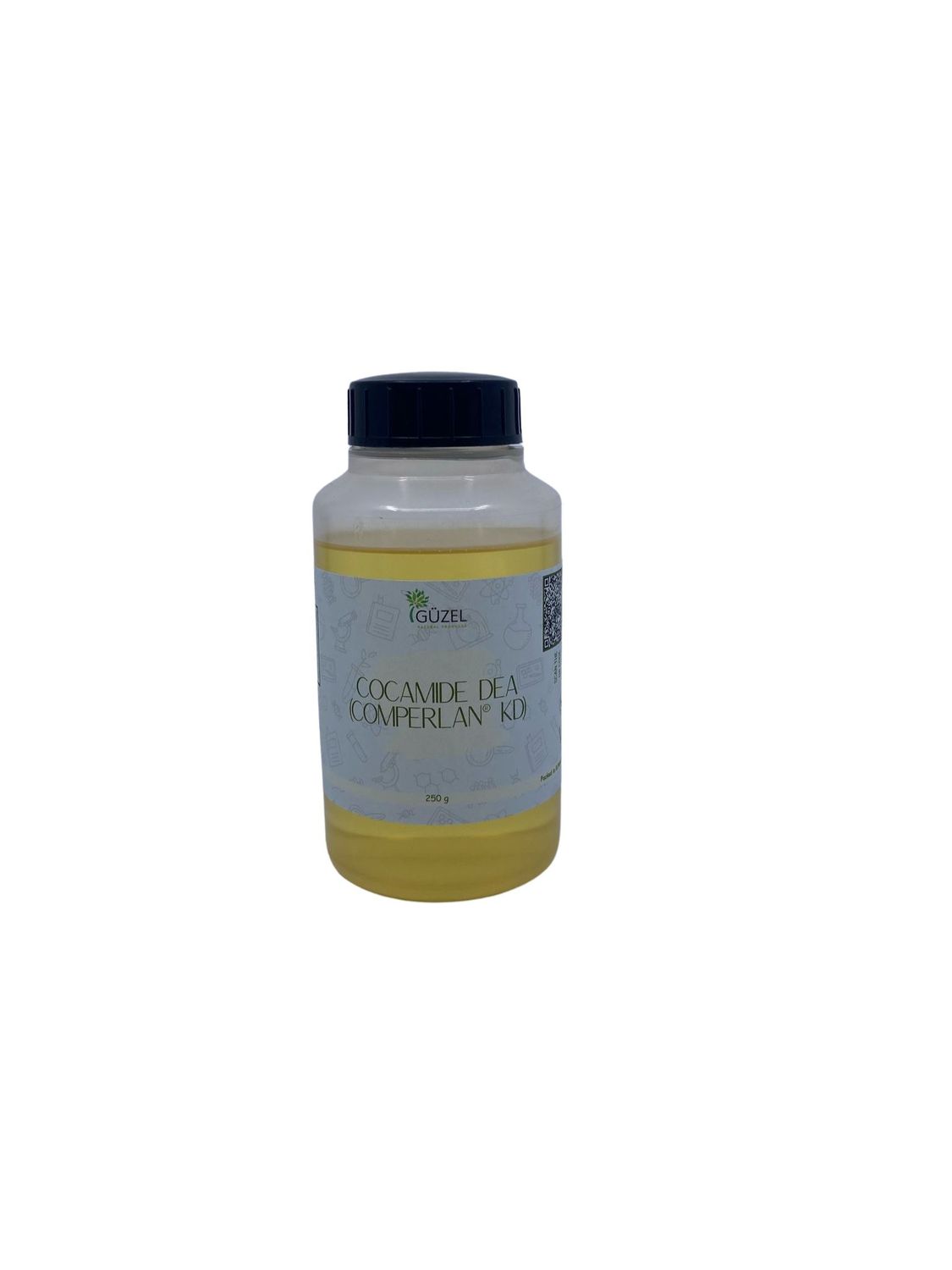Cocamide DEA (COMPERLAN® KD)
0.750KWD
Size
Please choose
In stock
Product Details
UPC: 00986
Comperlan coconut diethanol amide
surfactant preparations.
1
COMPERLAN® KD is recommended for shampoos, liquid soaps, shower/bath formulas, face cleansers and baby care cleansing products
Comperlan KD T
INCI name: Cocamide DEA (Coconut Fatty Acid Diethanolamide)
Recommend dosage: 1-5%
Properties:
• Thickener agent
• Amide content: min. 80%
• Use as thickener in cleaning products
2
Description
Coconut diethanolamide is a mixture of amines able to neutralize acids to form salts plus water through an exothermic reaction. Amines may be incompatible with anhydrides, isocyanates, peroxides, halogenated organics, epoxides, acidic phenols, and acid halides. In combination with strong reducing agents, such as hydrides, amines can generate flammable gaseous hydrogen.
CDEA is typically used as a foaming agent in shampoos, hand soaps, and bath products. Additionally, it has an application in various types of cosmetics as an emulsifying agent; and in detergents – such as dishwashing liquid – as a foaming agent.
Coconut DEA features good stabilizing properties. As an anti-corrosion inhibitor, it’s utilized in metal-working fluids and polishing agents. Additional advantages of Coconut DEA include excellent decontamination, wetting, dispersion, and antistatic performances.
In washing detergent formulas, it’s a water softener, thickening, foaming, and foam-stabilizing agent. Combined with other anionic surfactants, such as LABSA, Coconut diethanolamide significantly improves the foaming ability of the formula, making the final product stable, rich, and long-lasting. CDEA can soften fiber textile, which makes it particularly suitable for use in formulas for washing rigid natural and animal fibers. The addition of Coconut diethanolamide to the washing detergent notably enhances overall laundry effects.
Coconut diethanolamide is a mixture of amines able to neutralize acids to form salts plus water through an exothermic reaction. Amines may be incompatible with anhydrides, isocyanates, peroxides, halogenated organics, epoxides, acidic phenols, and acid halides. In combination with strong reducing agents, such as hydrides, amines can generate flammable gaseous hydrogen.
CDEA is typically used as a foaming agent in shampoos, hand soaps, and bath products. Additionally, it has an application in various types of cosmetics as an emulsifying agent; and in detergents – such as dishwashing liquid – as a foaming agent.
Coconut DEA features good stabilizing properties. As an anti-corrosion inhibitor, it’s utilized in metal-working fluids and polishing agents. Additional advantages of Coconut DEA include excellent decontamination, wetting, dispersion, and antistatic performances.
In washing detergent formulas, it’s a water softener, thickening, foaming, and foam-stabilizing agent. Combined with other anionic surfactants, such as LABSA, Coconut diethanolamide significantly improves the foaming ability of the formula, making the final product stable, rich, and long-lasting. CDEA can soften fiber textile, which makes it particularly suitable for use in formulas for washing rigid natural and animal fibers. The addition of Coconut diethanolamide to the washing detergent notably enhances overall laundry effects.
Stability/Shelf life
Stable. Combustible. Incompatible with potent oxidizing agents.
Store in a cool, dry, and dark place.
Under proper storage conditions, the shelf life of Coconut diethanolamide is two years.
It’s also used as a a surfactant in soap bars, light-duty detergents, and dishwashing detergents, as well as a delinting agent for cottonseed. CDEA can be added to lauryl sulfate-based liquid cleansers to help stabilize and improve foam formation.
Consumer use
Coconut DEA is an ingredient in a variety of cosmetic formulations, including shampoos, conditioners, bath oils, cooling fluids, lipsticks, soap bars, hair dyes, and various household detergents, in concentrations ranging from 1 to 25%.
Solubility
Coconut diethanolamide is soluble in water at 20 °C; produces an alkali in an aqueous solution.
Save this product for later
Customer reviews
Reviews only from verified customers
No reviews yet. You can buy this product and be the first to leave a review.
Cocamide DEA (COMPERLAN® KD)
Display prices in:KWD

